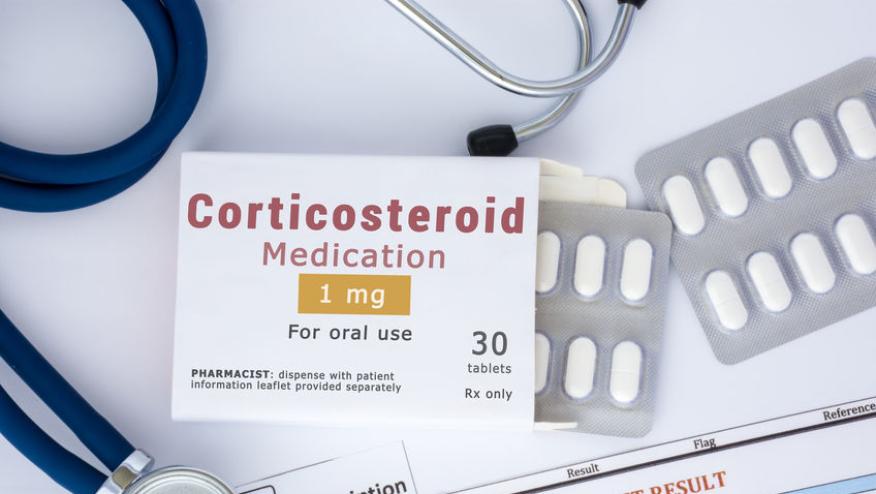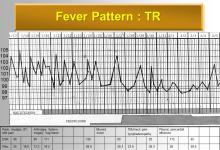Can Steroids Be Stopped in Lupus Nephritis? Save

Key Takeaways
- Eventual tapering and withdrawal of steroids in patients with lupus nephritis is recommended to minimize the drugs' adverse effects, but the ideal timing is uncertain.
- This study followed 136 lupus nephritis patients receiving steroid treatment, with the goal of identifying clinical or other factors that predict successful withdrawal.
- Discontinuation was most successful in patients who had obtained renal remission and low lupus disease activity on therapy, and it was achievable earlier in patients who stayed on hydroxychloroquine.
Patients with lupus nephritis were more likely to get off chronic corticosteroid treatment, and stay off, when certain factors were in place, researchers said.
Achieving renal remission and low overall lupus disease activity were one such milestone; remaining steadily on hydroxychloroquine also helped by reducing risk of flares, reported Maria Tektonidou, MD, PhD, of National and Kapodistrian University of Athens in Greece, and colleagues.
And, unsurprisingly, those who continued steroid therapy longer and suffered more renal flares incurred more organ damage over 10 years, the group noted in RMD Open.
"Future studies should explore whether novel biological therapies can facilitate earlier tapering strategies while maintaining disease remission across diverse patient populations," Tektonidou and colleagues wrote. "Maintenance of both renal response and overall low disease activity status may serve as future targets in [lupus nephritis] clinical trials and clinical practice."
When and how to begin withdrawing steroids in lupus nephritis patients is an important question, as the adverse effects mount up with each additional month of treatment. But it's also important to preserve kidney function, such that the risk-benefit balance involved in stopping or continuing steroids varies from one patient to another.
It hasn't been clear, however, to determine the optimal timing for steroid tapering and withdrawal. Better understanding of the factors associated with successful discontinuation would help guide these decisions, and that was the point of the new study.
Tektonidou and colleagues examined outcomes in 136 biopsy-proven lupus nephritis patients first seen at an Athens hospital and treated with steroids from 1992 to 2021. Mean age was 33, and 83% were women. Estimated glomerular filtration rate (eGFR) averaged about 97 mL/min/1.73m2 at the first visit, although significant impairments were seen in 26 of the patients (including 10 with values of 30 mL/min/1.73m2 or less).
At the 1-year point, 61 patients were on steroids at more than 5 mg/day in prednisone equivalents, although these high doses were more often recorded for patients treated prior to 2011. In that group, 64% of patients were on high doses, compared with 36% of those treated during 2011-2021. Median time from diagnosis to a prednisone-equivalent dose of 5 mg/day was 12 months, and the median to complete cessation was 29 months. Some 86% did eventually get completely off steroids.
Other notable findings at 1 year were that 70% of patients had achieved complete renal remission, and 76% had Systemic Lupus Erythematosus Disease Activity Index (SLEDAI) scores of 4 or less, indicating low activity. Median time to renal remission was 6 months.
Factors associated with successful withdrawal included:
- Achieving complete renal remission by year 1
- Achieving complete lupus remission by year 1
- Achieving Lupus Low Disease Activity State (LLDAS) by year 1
- Achieving "disease modification" based on eGFR, proteinuria, steroid dosage, and renal flare occurrence by year 1
The study also found that those who eventually got to complete discontinuation had reached the 5-mg/day level in a median of 12 months, compared with 19 months in those never stopping steroids.
One common reason for continuing steroids is to prevent flares. Twenty-two patients developed flares during tapering, with all but three being renal flares. Tektonidou and colleagues found that patients who had achieved complete renal remission relatively quickly were less likely to experience flares (median 6 months for patients without flares vs 10 months for patients with flares).
Also, those in LLDAS when tapering had reached 7.5 mg/day were less likely to develop flares (OR 0.23, P=0.046). Flare risk was also more than doubled with early attempts to reduce immunosuppressant doses prior to complete steroid withdrawal. On the other hand, flare risk didn't seem to vary with the speed of tapering or the dosage prior to tapering.
Flares were not uncommon after steroid discontinuation, occurring in one-quarter of those who had stopped the agents, after a median of 25 months. The chief factors associated with reduced post-discontinuation flare risk were having complete lupus remission at the final steroid dose, and staying on hydroxychloroquine through the tapering period. (Still, a few patients with these characteristics had flares.)
Tektonidou and colleagues also looked at organ damage accrual as assessed with the Systemic Lupus International Collaborating Clinics/American College of Rheumatology Damage Index Score (SDI), with a value of 1 or more indicating presence of damage. Patients eventually stopping steroids were at significantly lower risk of sustaining damage (OR 0.23, P=0.012). Each additional month needed to reach complete withdrawal conveyed 2% more risk of damage (P=0.04). Flares, of course, also raised risk, while continuing on hydroxychloroquine reduced it, the researchers found.
Limitations to the study included the Greek patient population and the small number of patients. Also, standard treatments changed during the 30-year study period, with hydroxychloroquine becoming more common and biologics having been introduced in the mid-2000s.









If you are a health practitioner, you may Login/Register to comment.
Due to the nature of these comment forums, only health practitioners are allowed to comment at this time.